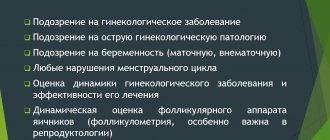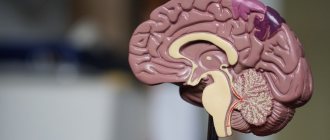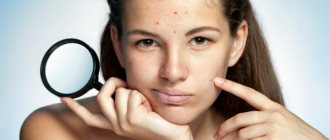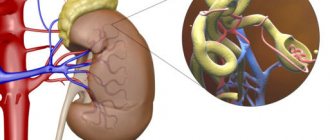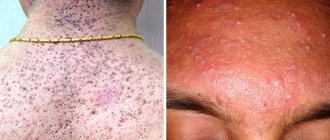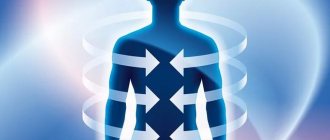Specialists from the multidisciplinary medical center KIT say: most people do not know how to sit correctly, which is why they experience back pain, discomfort in the spine, and suffer from various diseases and pathologies.
We spend a lot of time sitting: at work, at home, in transport, outside in the park. We sit on a sofa, a chair, an armchair, or a bench. The lumbar spine experiences enormous stress, and it is this area of the back that is considered the most vulnerable. Incorrect body position, incorrect posture, in which a person stands for a long time at a computer, book, or business papers, will inevitably lead to back pain and the development of various diseases:
- internal organs and systems will cease to function normally;
- visual acuity will decrease, headaches will appear;
- due to physical inactivity, it will be more difficult for a person to cope with physical activity;
- stoop will appear, the paravertebral muscles will be under constant strain;
- the spine will begin to bend to the side, which will lead to the development of postural disorders and scoliosis;
- the patient will experience discomfort or pain in the lower back, neck, thoracic, coccygeal region;
- Osteochondrosis, a degenerative-dystrophic process in the spine, will actively develop.
Why does hyperlordosis occur and what is dangerous?
Common causes of acquired lumbar hyperlordosis include excess weight, pregnancy, osteoporosis, spondylolisthesis, and a sedentary lifestyle.
Walking in heels is also often cited as a cause of hyperlordosis. However, scientists from Measurement of lumbar lordosis in static standing posture with and without high-heeled shoes have not confirmed this dependence.
Deformation and displacement of the vertebrae with lumbar hyperlordosis threaten pinched nerve roots, intervertebral hernias, inflammation of the muscles surrounding the spine, and other complications.
Causes of lordosis
Lordosis is a condition that can develop in people of any age. Certain medical conditions and risk factors increase the likelihood of developing lordosis and include:
- Spondylolisthesis: This is a spinal disorder in which one vertebra moves forward in relation to the vertebra below. The condition is treated both conservatively and surgically.
- Achondroplasia: This disease is one of the most common types of dwarfism.
- Osteoporosis: a systemic disorder of bone tissue with loss of minerals and decreased bone strength.
- Osteosarcoma: This is a bone tumor that usually develops in the knee, hip, or shoulder area
- Obesity: is an epidemic in developed countries. Excess weight increases the load on the spinal structures and contributes to the development of lordosis in the lumbar region.
- Excessive physical activity: performing movements with excessive extension of the torso (for example, playing a sport such as gymnastics).
- Arthritis: In some cases, prolonged inflammation in the joints can contribute to the development of lordosis.
- Calcium deficiency: can lead to decreased bone mineralization (osteoporosis), which contributes to the development of lordosis.
- Kyphosis: excessive backward protrusion of the spine can lead to the development of compensatory lordosis
- Discitis: a pathology in which an inflammatory process develops in the intervertebral space
- Benign juvenile lordosis: This type of curvature occurs in children, but the problem often goes away on its own as the child grows
- Genetic diseases or muscular dystrophies are also sometimes the cause of lordosis.
What happens to the muscles
With any violation of posture, excessive rigidity of some muscles and weakness of others are observed. And lumbar hyperlordosis is no exception.
Here is a list of stiff muscles that pull on the spine:
But here are weak muscles that are constantly in a stretched position:
Types of Lordosis
Lordosis in the lumbar spine
Lordosis in the lumbar spine is most common. The easiest way to check this lordosis is for a person to lie on a flat surface with his back. When holding your hand under the lower back, there should be little free space. If there is lordosis, there will be more space between the back and the surface. If the lordosis is pronounced, then the curvature will be determined visually. And when viewed from the side, a protrusion of the abdomen and buttocks will be visible.
Cervical lordosis
In a healthy spine, the neck should look like a very wide "C" shape, with the curvature toward the back of the neck. We can talk about cervical lordosis when the spine in the cervical region has an abnormal curvature.
This could mean:
- Too much bend.
- Bending in the wrong direction is also called straightened cervical lordosis.
- The curvature is shifted to the right.
- The curvature is shifted to the left.
How to tell if you have excessive arching in your lower back
With hyperlordosis, the lower back may hurt, especially when walking and other physical activity, and also if you sleep on your stomach.
If you are experiencing lower back pain, consult your doctor. An orthopedic doctor determines the presence of hyperlordosis and the severity of the disease by X-ray films of the spine, as well as by visual examination.
Severe forms of lumbar hyperlordosis (if you have this particular disorder) are treated with medications, physiotherapy, manual therapy, massage and exercise therapy. A set of measures allows you to effectively influence the muscles around the spine and restore correct posture.
If you don't have pain or limited mobility, but you suspect your posture is misaligned, here are some tests to check.
Pelvic bone test
For this test you will need chalk or pencil, a vertical plane, a ruler and a protractor.
Feel the protruding bones of the pelvis in front and behind - the anterior and posterior superior iliac spine.
Mark on the plane the level of the anterior superior spine, and then the level of the posterior one. Draw two parallel lines and then connect the marks and measure the angle. Normally, the pelvic tilt angle should be from 7 to 15 degrees.
Two palm test
This is a simpler test that does not require measurements. Simply place the edge of one palm on your diaphragm and the other on your lower abdomen. Ideally, one palm should be placed above the other.
If your upper arm extends forward relative to your lower arm, you have an excessive arch in your lower back.
Content:
- Causes of spinal curvature
- Classifications and types of curvature
- Differences in back curvature in adults and children
- Short description
The human spine is exposed to a lot of stress every day. Due to the influence of negative factors, posture changes. Spinal curvature can be congenital or acquired. The condition affects the patient’s well-being, the quality of the circulatory and nervous systems. The pathology is treated by an orthopedist who prescribes treatment individually for each patient.
How to fix hyperlordosis
To correct your posture, you need to tone weak muscles and at the same time relieve tension from hard ones. Let's start by relaxing the tight muscles.
Stretching exercises
Since the tight muscles are located deep, it is impossible to roll them out on massage rollers or balls. Therefore, we will relax them with stretching.
Cat - cow
This exercise warms up and stretches the back extensor muscles well.
Get on all fours. Arch your back upward, starting from your lower back. Try to feel that your back is rising vertebra by vertebra.
Now gradually, vertebra by vertebra, bend down, starting from the thoracic region and ending with the lumbar region.
Repeat 5-8 times.
Tilt towards the legs with stretching
This exercise will give you a good stretch for the quadratus lumborum and spinal extensor muscles. You can use a stopwatch or just count to yourself.
Sit on the floor, stretch your legs straight forward. Bend over without bending your knees and stretch forward for 10 seconds, rounding your back, as in the photo on the left.
Now, tensing your back extensor muscles, bend in the other direction, as in the photo on the right. Hold this position for 10 seconds.
Bend to your feet again and stretch for another 40 seconds.
Perform 3-5 such cycles. By slightly contracting the muscles, you can deepen the pose and better stretch the deep muscles.
Quadratus lumborum stretch
Sit on the floor, leave your right leg in front, bring your left leg back. The angle in both knees is 90 degrees.
Tilt your body to the right, place your right hand on the floor, with your left stretch to the side and forward, stretching your entire left side.
Try to pull your left hip down and back as you stretch. Hold the pose for 30 seconds, and then repeat on the other side.
Iliopsoas stretch
Get down on one knee. There should be right angles between the thigh and shin, thigh and body.
Tighten your buttocks by twisting your pelvis. Lower your shoulders, squeeze your shoulder blades, tighten your abs. Maintain tension until the end of the exercise.
From this position, rock back and forth a little. Continue rocking for 1 minute, then switch legs and repeat.
In this exercise, it is important to keep your buttocks tight and your pelvis twisted. If you do everything correctly, you will feel tension in the groin at the supporting leg.
iliopsoas stretch on the floor
Lie on the floor on your stomach. Bend your right knee, lift your shin and grab your ankle with your right hand.
Twist your pelvis and lift your body up. Only the chest section rises, the gaze is directed downwards, the neck is straight. Hold this pose for a second, then lower onto your stomach and switch legs.
Repeat 5 times on each leg.
These five exercises will take you no more than 12–15 minutes. After them, the feeling of fatigue will disappear, the back will feel more flexible.
However, stretching is not enough to correct your posture. You also need strength exercises that will tone weak muscles.
Strength exercises
Slow crunches
Lie on the floor on your back, stretch your arms above your head. Begin to slowly twist your back, first lifting your arms and neck, then your thoracic spine, and only then your lumbar spine. At the extreme point you sit, the angle between your legs and body is 90 degrees, your arms are extended upward.
Begin to lower yourself slowly until you reach the starting position. Do the exercise 10 times.
Each rise and fall should be completed no faster than 20 seconds - count to yourself or watch a stopwatch.
Try to spend more time in the most difficult positions, do not linger at the extreme points: as soon as you touch the floor, immediately raise your body again.
Classic and side planks
Get into a classic hand plank position for 30 seconds. Turn to the side and lift one arm off the floor into a side plank. Hold the pose for another half a minute.
Return to a straight plank position for 30 seconds. Now go into a side plank on the other side for 30 seconds.
Complete as many cycles as you can.
Exercise "Vacuum"
This exercise helps tone the transverse abdominis muscle, which supports the internal organs.
Lie on your back, bend your knees, place your feet on the floor. Place your hand on your stomach below your navel to control the movement.
Inhale so that your stomach inflates and the hand lying on it rises. Exhale and imagine that you need to touch your navel to the floor or to your spine. At the same time, the stomach will be strongly drawn in. Stay in this position for 3-5 seconds.
Repeat the exercise 10 times.
Exercises for hips and buttocks
There are many exercises to strengthen the gluteus maximus and hamstring muscles:
- Any squats: with dumbbells, barbells, expanders, jumping.
- Lunges: on two or one leg, moving around the gym or standing still, with or without free weights.
- Deadlift: with a barbell or dumbbells, on two or one leg.
For options and techniques for performing exercises for the hips, see this article. Here are exercises for the buttocks if you hate squats, and in the video below if you love them.
Pick four exercises—two for your glutes and two for your hamstrings—and incorporate them into your workout.
Exercises to relieve back pain
You can perform these exercises right at your workplace; they will help eliminate pain in the neck and back.
- Tilt your head to one shoulder, then to the other, lower your head forward, tilt it back.
- Slowly lower your chin to your chest, tense your neck muscles, make several semicircles with your head from one shoulder to the other and back.
- With your hands on your shoulders, rotate your elbows back and forth.
- Squeeze your shoulder blades together, pushing your chest forward as much as possible.
- Move away from the table, tilt your body to the left, right, forward, bend back.
- Close your fingers and pull them upward with force.
- Get up and walk around for a couple of minutes. If possible, do some squats.
Please note that such exercises are only a warm-up for long-term sedentary work. To maintain a healthy back, you should exercise regularly or perform an effective set of exercises. The most useful are crunches, push-ups, squats, and abdominal strengthening. Every day you should stretch your spine; to do this, hanging on the horizontal bar for 1-2 minutes is enough. Strength training, yoga, swimming, amateur sports and even regular walking - all can bring some benefits and help maintain posture and a healthy spine.
Lordosis in children
Lordosis often appears in childhood without any obvious cause. This condition is called benign juvenile lordosis. Its development is associated with the fact that the muscles around the child’s hips are weak or tight. Benign juvenile lordosis usually resolves on its own once the child's growth is complete.
Lordosis can also be a sign of hip dislocation, especially if the child has had an accident or fallen somewhere.
Other conditions that can cause lordosis in children are usually related to problems with the nervous system and muscles. These conditions are quite rare and include:
- Cerebral paralysis
- Myelomeningocele, a congenital abnormality in which the spinal cord protrudes through unfused vertebrae
- Muscular dystrophy, a group of inherited diseases that cause muscle weakness
- Spinal muscular atrophy, an inherited disorder that causes involuntary movements
- Arthrogrypposis is a congenital pathology in which the joints cannot move fully.
